Day 3: Mumbai and Delhi
Day three and we have another birthday. Hooray! Happy birthday Maya! In honor of your special day, we've included a traditional Indian birthday song in the blog:
Hey Maya, it’s your birthday
We’re gonna eat curry like its your birthday
We’re gonna sip hot chai like its your birthday
You know cos we don’t give a dabawallah cos it’s your birthday!

We met with the traditional dabbawallah’s of Mumbai in the morning. For the last century dabawallah’s have been responsible for delivering hot, home-made meals for workers throughout the city at lunch time. There operation has become so sophisticated that a couple of years ago, they won six-sigma rating for their success rate of 99.9999%. None of the dabbawallah’s have any real education and many are illiterate. Yet through the simplicity of their system and a strong culture of discipline and duty, they have thrived and earned well-deserved international acclaim. On the day we met them, a crew from Sahara TV was there and a few of us (Prof. Roberts, Jose and Sarah) were interviewed and may even appear on national television!


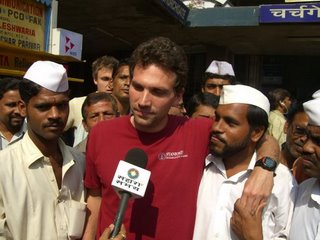
Sara, Prof. Roberts and Jose being interviewed with the Dabbawallah's by Sahara TV
Before our next meeting we wanted to experience travelling on an Indian train – in the general class components. Mumbai trains are one of the leading causes of accidental deaths in the city. Commuters, desperately trying to find space in the crowded carriages, will often risk their lives by hanging from the sides or even sitting on top of the train. Luckily, we were not travelling in rush hour, so many of us found seats but it still made the London Underground look like the Orient Express in comparison.
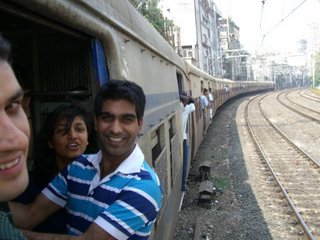
 Riding the Indian trains in Mumbai
Riding the Indian trains in Mumbai
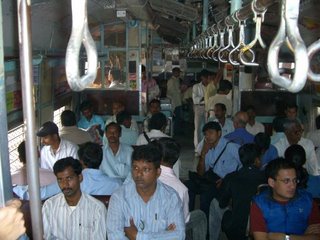 Can anybody spot the tourist?
Can anybody spot the tourist?
The final meeting of the day was arguably the best experience of our trip to date: a visit to Asia’s largest slum dwelling. This was an emotional and shocking experience, and words can’t really do it justice. The pictures below give some idea of the poverty we saw. Of Mumbai’s population, 20% live in apartments and houses, 60% live in slums and 20% are homeless. The 60% that live in slums occupy only 13% of the city area. The contrast between the slums we saw and the opulence of other parts of the city is saddening and shameful. Yet we saw a silver lining: thanks to the work of leaders like Jockin Arupatham, President of the National Slum Dwellers Federation, with whom we met, slum dwellers have more opportunities than ever, to get an education, a job and a concrete roof over their heads.



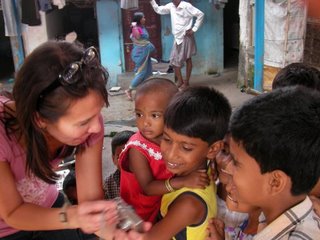
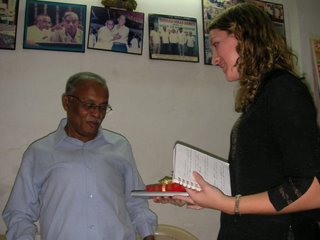 Visiting the slums in Mumbai
Visiting the slums in Mumbai
We left the slums straight for the airport and our evening flight to Delhi. We got to our hotel in the capital at around 10pm and all retired early, ready for an early start the next day….

1 Comments:
i like to think of the dabbawallahs and dharavi not as 'old' india but as 'real' india. these aspects of the country are not going anywhere any time soon. i think one needs to be more aware of such facets of india in order to better understand it.
12:11 PM
Post a Comment
<< Home